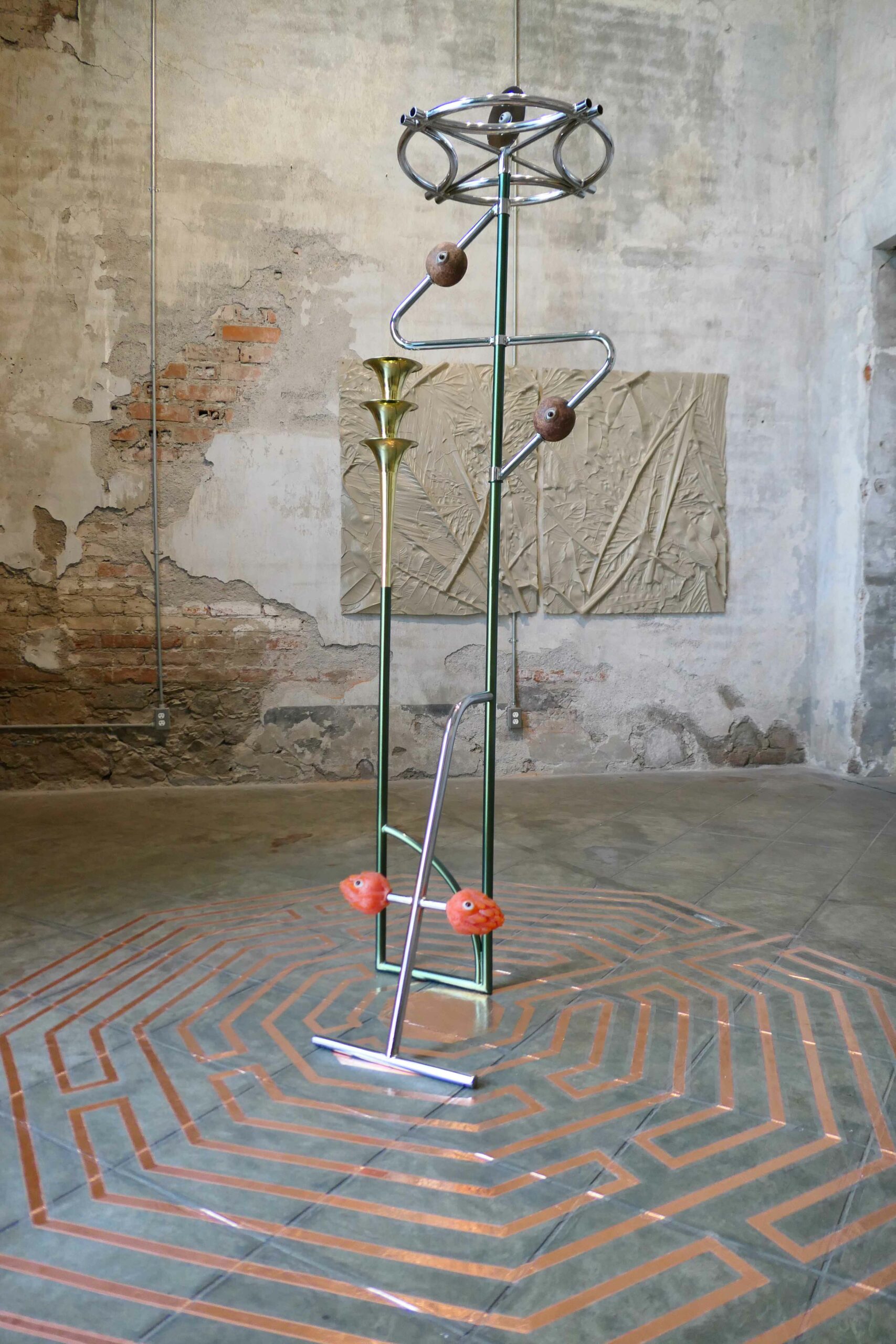Launched in 2013, Salón Acme is billed as “a platform and an art event created by artists for artists that gives visibility, impulse, and dissemination to emerging creators who develop their work both in Mexico and abroad.” Housed in a pair of delightfully crumbly mansions — completed in 1906 and seemingly never remodeled — Salón Acme is divided into six sections: an open call judged by a curatorial board; a Bodega section dedicated to artists who’ve participated in previous editions; an Estado section spotlighting artists from a particular Mexican state — in this year’s case Nuevo León; a Projects section hosting solo shows presented by Mexican and foreign artists; a central patio housing large-scale installations; and a Sala stocked with artist books and special publications. Of my five key takeaways from this year’s Salón Acme — held from February 8-11 at Proyectos Prim — the first three came from the fair’s open call, which speaks highly of that program and its selection committee.
Napoleón Aguilera, Juego de Villanos
At last year’s Salón Acme, Guadalajara native Napoleón Aguilera generated well-deserved buzz with a series of outlandish wooden boots that paid tribute to everyone from the Greek deity Hermes to the truth-challenged puppet Pinocchio. A trained architect who draws inspiration from Mexican traditions and artisanal techniques, Aguilera has also created his own take on “Crocs” — crocodile-shaped boots sculpted from basalt, a Mexican volcanic rock traditionally used for molcajetes. This year Aguilera made an even louder statement with Juego de Villanos — a suite of sci-fi-inspired laser guns also sculpted from basalt. While pointing to the real-world implications of children playing with toy guns, Aguilera ventured even further into loaded territory via gilded grips he purchased on the black market in Northern Mexico — complete with depictions of cartel favorites such as La Santa Muerte, Saint Judas, and the initials of Scarface protagonist Tony Montana.
Issa Tellez, Yo Soy Su Hija
In her video Baile Lencho, queer artist Issa Téllez donned a hot pink sequined pantsuit and danced with other women to traditional Mexican huapango music, illuminated only by the headlights of nearby trucks. Staged in tribute to the dances her grandfather held in Northern Mexico before border violence made them impossible, Téllez’s performance also functioned as a confessional, during which she admitted that her father refused to appear in her video based on his own father’s macho and homophobic beliefs. “We queer people have a secondary pain,” Téllez says of the familial estrangement many LGBTQ+ community members experience. “And I understand, it’s his father. I understand very well, but I am his daughter and I’m still here.” Addressing that poignant moment and the traditional Mexican music she grew up on, Téllez staged a simple but effective intervention on a pink accordion — “Pero yo soy su hija y yo sigo aquí.”
Jonathan Vázquez, Cocijo Sobre Carrito (Verde Esmeralda)
Once worshiped by the Zapotecs as a god of rain, thunder, and lightning, Cocijo found himself in a supermarket shopping cart courtesy of Oaxacan artist Jonathan Vázquez. Drawn directly from a figure on a tomb at Monte Albán in Oaxaca, Vázquez’s project took a satirical jab at the commercialization and fetishization of indigenous cultures and pre-Columbian artifacts. Cut from the very same cloth, Mexico City artist Enrique Argote’s adjacent installation, Vending Machine, came loaded with ceramic replicas of figurines represented in the National Museum of Anthropology. Salón Acme visitors who happened to have 90 Mexican pesos — exact change only — could feed their coins into a slot and make a selection. After scouring my change purse and borrowing 15 pesos, I was lucky enough to purchase a ceramic duck, which unsurprisingly smashed to bits after being cranked out of its coil and falling three flights down.
Elisa Pinto, Tara Blanca
In her sculptural series Gimnasio Metafísico/Metaphysical Gymnasium, Aguascalientes-born Mexican artist Elisa Pinto explored the concept of the tara — a supreme savior and goddess of mercy in Buddhist culture. In essence an abstract interpretation of outdoor gym equipment that can be found in parks across Mexico City, Pinto’s Salón Acme installation, Tara Blanca, addressed self-care and spirituality through a conceptual lens. Given its cinematic setting at Salón Acme, it was easy to absorb Tara Blanca as an abstract object, but Pinto would arguably prefer you use it as a station to flex your spiritual muscle.
Catherine Anabella Lie, Precious?
Not unlike a TV show that confuses, and then fascinates and ultimately hooks you, Indonesian artist Catherine Anabella Lie’s Precious? boasted all the disquieting elements of an episode of Black Mirror. Sitting erect on a plinth in a tiled room all to itself, Lie’s short film replayed a cringe-worthy conversation between a discarded iPhone and its former owner. “U have NO IDEA where ive been since u abandoned me. k. so after u traded me in, i was put in a big box with lots of phones. Some ugly af. some sexy, like me.” The following frantic exchange involved everything from a meme of an eye-rolling Judge Judy to photos (“#pic or not real”) of a cargo ship headed to a trash dump in Nigeria. Amusingly nodding with its title to Gollum’s refrain in Lord of the Rings, Lie’s Precious? admirably went far beyond screen addiction to protest global electronic waste.








